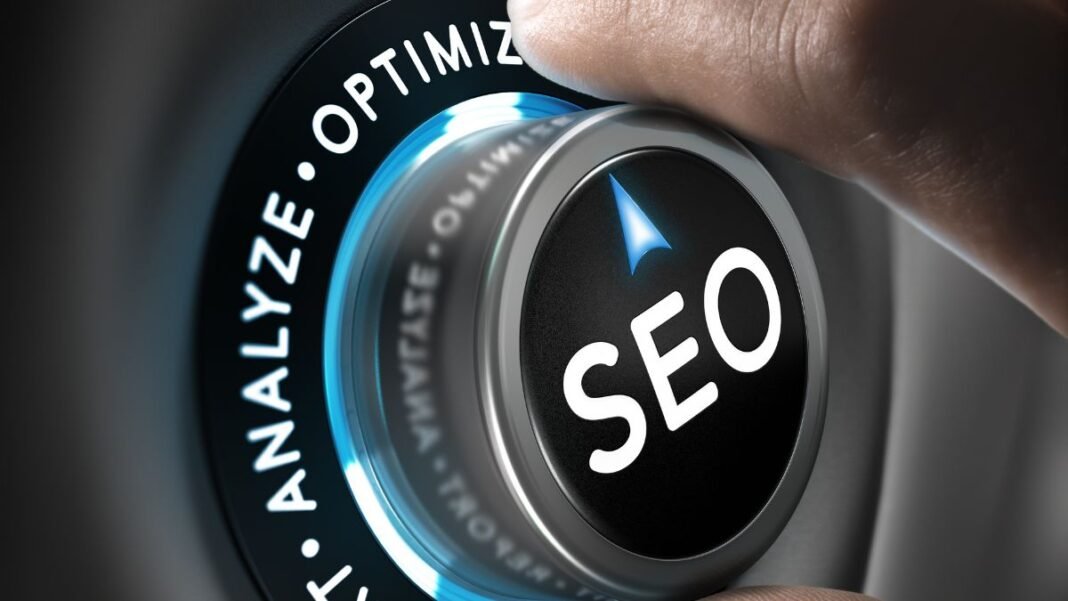Search engine optimization, more commonly known as SEO, is optimizing your website and content to rank higher in search results on Google, Yahoo!, and Bing.
With over 2 billion searches per day worldwide, people are searching for something. That something usually is something they need or want – a product or service.
So, if you have a website or are developing a website, then you want your site to rank high in search results so that you get traffic and conversions. That is the purpose of SEO!
There are many parts of SEO that you can hire someone to do for you or that you can learn how to do yourself. Some of these include keyword research, linking strategies, image optimization, and creating high-quality content.
This article will go into detail about some aspects of SEO and what each piece does for your site.
What is Digital Marketing?
Digital marketing is the use of digital channels such as websites, social media, email, and mobile apps to promote products and services.
It is about creating engaging content that will capture the attention of potential customers, drive traffic to a website or app, and ultimately convert them into paying customers.
By leveraging data-driven insights, digital marketers can create campaigns that are more effective in reaching their target audience.
Digital marketing also provides businesses with an opportunity to reach out to a global market at a fraction of the cost of traditional marketing methods.
What is SEO?
Search engine optimization, or SEO, is the practice of optimizing a website and its content to rank higher in search results for keywords or phrases that relate to the site’s content.
SEO can drive traffic to a website, product, or service listing. We can also use it as part of a marketing strategy to increase brand awareness. It is a very effective way to reach potential customers who are searching for what your business offers.
There are two main parts of SEO: On-page SEO and off-page SEO. On-page SEO involves optimizing the content on your website for search engines. Off-page SEO refers to backlinks and other factors outside of your control that influence search engines.
Both are important in gaining visibility in search results, but some changes may affect one more than the other. Changes to on-page SEO will typically affect immediate visibility, but may not affect long-term visibility. Changes to off-page SEO will have more lasting effects.
SEO and Digital Marketing Differences
SEO and digital marketing are two terms that are often used interchangeably, but they actually refer to two different concepts.
SEO stands for Search Engine Optimization, which is optimizing a website for higher rankings in search engine results pages (SERPs). Digital marketing is the use of digital channels such as email, social media, and websites to promote a brand or product.
SEO focuses on making sure that your website appears prominently in SERPs when people search for related keywords. Digital marketing, meanwhile, focuses on reaching potential customers through various online channels. Both strategies can be used together to maximize visibility and reach more people.
Leverage Digital Marketing and SEO
How to leverage these two important aspects of online marketing. Learn how to use digital marketing and SEO to improve your website’s organic search ranking and visibility.
01. Optimizing a website for search engines
Now that your website is created, it’s time to use SEO to bring in search engine traffic. The first step is to make sure your website is optimized for search engines.
This means having clean, user-friendly navigation; including a lot of content with keywords; and having an overall well-designed site. These elements will encourage Google and other search engines to list your site high on search results.
If you want people to find your site via SEO, then you will need to invest some time and money. It is not a quick fix, but a continual one that requires attention to detail.
You will need to keep updating your content and re-invest in improving your SEO. Once it is established, you will slowly see an increase in traffic.
02. Using keywords
Keywords are a big part of SEO. Keywords are what people type into search engines like Google, Bing, and Yahoo to find information on topics.
For example, if you were looking for information on how to use SEO in digital marketing, you might type in “SEO for digital marketing” or “digital marketing SEO.”
As you can see, both keywords would be used in a search query. By having your website optimized for these keywords, people who are searching for them will find your site and your content!
Having a strong SEO strategy is crucial to success in digital marketing. When people find your content through searches, they are going to engage with it and share it with others.
03. Create easy-to-read and understand the content
Content is king, they say. Well, in SEO it’s queen-or empress, even. Because content is such an important part of SEO, it makes sense to include quality content creation as a part of your marketing strategy.
People don’t go to the internet to look for meaningless jumbles of words-they want information!
If you have a website or a blog, then you are very informative. Your content needs to be well-written, and interesting, and answer questions or solve problems for your audience.
People will continue to use the internet and search engines, so you need to keep putting out quality content that people want to read and find online. By promoting your content through other channels like social media and email lists, you can grow your audience.
04. Maintain a structure that search engines like
As we’ve mentioned, most of the world relies on search engines like Google to find information. That’s why it’s so important that search engines like Google like your content!
Search engine algorithms use specific criteria to determine a page’s relevance to a search query. We relate some of these criteria to the content of your page, while others look at how your page is designed.
Content-based criteria include vocabulary used, paragraph length, headings, and links used. Design-based criteria include whether your page is dynamic (has features that change depending on the user’s behavior) and whether it uses heavy images or videos.
It’s important for SEO that you maintain a structure that search engines like.
05. Use images and videos
Since Google favors websites with rich content, using SEO to your advantage can help you get more traffic from Google searches. Rich content includes images and videos, so creating a website with lots of these helps you rank higher in Google.
Images and media can be powerful tools to help improve website SEO content. By using visuals, such as images, videos, and infographics, businesses can bring their content to life and attract more viewers.
Not only do visuals make your content more interesting, but they also help with SEO. Images can break up text and make the page more visually appealing for readers. Properly optimized images can increase the visibility of a website in search engine results pages (SERPs).
Media such as videos are a great way to engage viewers and keep them on the page longer, which also helps with SEO rankings. Ultimately, by leveraging images and media on your website’s content, you can not only create a better user experience but also improve your SEO rankings.
06. Make your website mobile friendly
Another key component of SEO is making your website mobile-friendly. Almost every smartphone user uses apps rather than mobile browsers to access various services.
This is because they design apps to be user-friendly and provide users with everything they need. Mobile browsers are not as perfected and have more difficulties providing all the features users need.
Since most people use mobile apps rather than mobile browsers, companies must ensure their content is available through the app. By doing this, you will gain more traffic and visibility, which will boost your sales or conversions.
Having a website that is not optimized for mobile usage will ultimately decrease your traffic and conversions.
07. Use social media
As mentioned earlier, social media is a huge part of modern life. It’s hard to find someone who doesn’t have at least one social media account.
And since most people have accounts, it’s easy to use social media to market your business. You can create ads on Facebook and Instagram, or start a blog on YouTube or Twitter.
With all the different social media platforms, you can choose which ones are the most effective for your business. For example, if you sell furniture, you probably won’t have many followers or likes on Instagram or Twitter, but you could definitely create an ad for your shop on Facebook!
Using social media in your marketing campaign can be very effective. People like to share about their favorite places, so sharing your business with your friends and followers may get them interested in using your service or product.
How Important is SEO for Digital Marketing?
SEO is a vital part of digital marketing, as it allows businesses to reach their target customers. It helps them to get more visibility in search engine results and drive more traffic to their website.
SEO is a term that stands for search engine optimization. It refers to improving the content on your website for search engines like Google, Bing, and Yahoo!
There are many components of SEO, including backlink building, keyword research, and content formatting. Backlink building involves getting other websites to link to your website. Keyword research is identifying which keywords are best for our content and audience. As well as determining how to best optimize your content for those keywords.
Compiling and formatting content includes making your content rich with images and/or videos. These components of SEO can help get your website found in search engines.
SEO also plays an important role in improving the overall user experience on the website and helping it rank higher in search engine results.
By utilizing SEO techniques, businesses can increase their brand visibility, build trust with potential customers, and ultimately achieve better ROI from their digital marketing campaigns.

